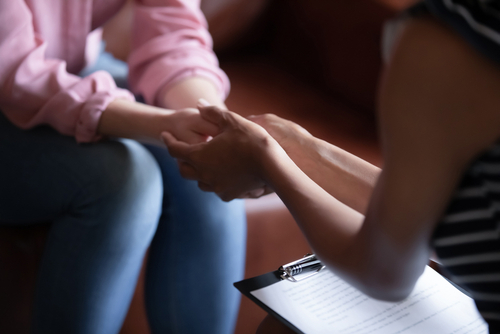
Prescription opioid abuse has become a true national health epidemic and is the leading cause of death for individuals under the age of 50. Summit Health has long been on the front line as an advocate, raising awareness of the risks associated with opioid misuse and promoting safe and effective non-pharmacologic options to relieve pain.
Our providers are continually working together to advance best practices and combat the disease through safe, opioid-free pain management options, and focusing our efforts and attention on educating physicians, families, and our communities about the causes, the dangers, and the treatments of opioid abuse and addiction.
Below are some helpful “how-to’s” on preventing prescription drug/opioid misuse, identifying signs of an overdose, and avoiding pain medication as first-line therapy.
How to Prevent Misuse
Misuse of prescription drugs is when a person takes a medication in a manner or dose other than prescribed. This behavior can have serious medical consequences, including overdose, addiction, and even death. Here’s how you can take prescription medication responsibly:
- Collaborate with your provider to create a plan to safely manage your pain. Your provider can suggest alternatives to opioids that effectively relieve pain such as pain relievers, physical therapy, cognitive behavioral therapy, and interventional pain management.
- Talk to your provider about your concerns and any potential side effects to your medications.
- Continue to follow up with your provider on a regular basis.
- When opioids are necessary, take them only as prescribed.
- Always avoid taking opioids with alcohol and other substances or medications that can cause drowsiness.
- Never share or sell prescription opioids.
- Store opioid medications securely and out of reach of others and keep track of how much medication is left in the container.
- Drop off unused or expired opioids or prescription drugs at a secure drop off site.
How to Identify Signs of an Overdose
Drug overdose is taking too much of a substance either intentionally or accidentally. A drug overdose can have harmful effects on your body and lead to serious complications and even death. Signs of a drug overdose can include:
- Unresponsiveness
- Not breathing or having shallow breaths
- Not able to be woken up
- Unusual snoring or gurgling noises
- Blue or gray lips or fingertips
- Limp arms and legs
How to Respond to a Possible Overdose
- Check vital signs
- Are they unresponsive?
- Do they have irregular or shallow breathing or are they not breathing?
- Is their skin blue, gray, or pale in color?
- Check for danger.
- Call an ambulance and remain on the phone until help arrives
- Place the person in the recovery position. To keep their airway clear and to prevent them from choking on their own vomit, lay them on their side, support their body with a bent knee, and turn their face to the side.
- If possible, administer Narcan/naloxone.
- Provide CPR.
- If there has been no response in 3-5 minutes, administer another dose of Narcan/naloxone.
How to Avoid Pain Medicine
- Prevent injuries by stretching before and after exercise, staying active, and maintaining a healthy weight.
- Treat mild pain by applying heat or cold or taking over-the-counter acetaminophen (Tylenol) or ibuprofen (Advil).
- Speak with your doctor about non-pharmacologic treatments for moderate or severe pain, which can include physical therapy or acupuncture.
If you are a concerned friend or family member, please encourage your loved one to seek help or talk to their health care provider about safe and effective alternatives. SAMHSA’s National Helpline [1-800-662-HELP (4357)] is available 24/7 for individuals and family members dealing with substance abuse.
